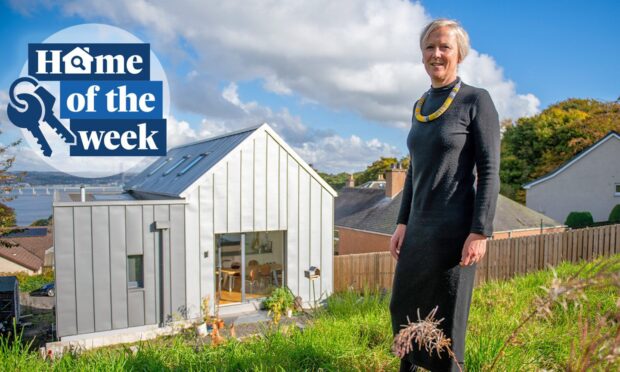To get the best results from garden plants, you need to give them the best growing conditions for each type of plant.
Unfortunately they are all different so if you wish to grow a wide variety you need to know if the plant likes dry conditions, wet soil, sun lover or shade plant, acid soil or alkaline.
You also need to know about the different types of soil as it can vary from one place to another, though with good practise you can ameliorate the soil to suite most plants.
Even around Dundee soils can vary tremendously.
Broughty Ferry gardens are most likely to be sandy giving a dry well drained soil, but further up the Tay estuary soils will be more alluvial from river sediments over time.
However gardens at the north west end are more likely to be made from boulder clay.
When I lived in Livingston the houses were built on reclaimed land from drained peat bogs, and if you dug through what the builders left around the houses you often came into layers of peat.
Gardens were all very wet and moss grew everywhere, not just in your lawns.
It was a great place for Rhododendrons, Azaleas, Blueberries and other acid loving plants, but if you wanted to grow vegetables like cabbage and cauliflowers the ground needed liming once every four years as you rotated crops.
Potatoes do not like an alkaline soil as it encourages scab, so they are grown on land limed at least three to four years ago, so it has had a chance for the lime to get washed out.
It helps ascertain alkalinity if you get a pH indicator. Aim to get a soil pH reading of about 6.5 for a neutral soil and lower for an acid soil.
In areas where Bluberries or other acid loving plants are to be grown, the soil acidity can be increased by adding sulphur and using fertilisers containing sulphur such as sulphate of iron, sulphate of potash and sulphate of ammonia.
No matter what soil you have or have been left with by the builders if you are on a new built house you can always improve the soil by digging, adding manure or compost, practising sowing green manures and keeping the weeds down.
On new built houses, provided you do have some garden, it can be improved by deep digging and growing a crop of potatoes, followed by a green manure crop.
Good green manure crops include tares, field beans, rye and clover. Let them grow until they begin to flower then trample them down and dig them in.
There is a modern tendency to practise growing plants on a no dig system.
This is fine if you have access to plenty of compost and let the worms do the cultivation. Afraid I am a bit too old fashioned as I like to dig, and when planning to plant fruit trees, fruit bushes, roses and sweet peas I always double dig the land.
This involves taking a trench out a foot deep and forking up the bottom of the trench incorporating compost as you go.
This helps to drain the soil which then warms up better in spring, increases the potential root zone and gives bigger and better crops. It may be very hard work, but it is a great exercise. No need to go to the gym.
Another great help to increase soil fertility is to keep a compost heap for lawn grass cuttings, annual weeds, plant debris, old bedding plants, kitchen waste, fallen leaves, rhubarb leaves and even shredded paper as well as shredded wood prunings.
To help fresh composting materials to rot down get out the garden fork and turn the heap two or three times a year. It’s another great exercise.
Twice a year we often change flowers in pots and hanging baskets. I always find a spot to reuse the old composts as they are great to improve soils.
You can also add them to the compost heap then use some compost as mulch for fruit bushes to retain moisture in dry weather.
Wee jobs to do this week
Strawberries have tended to run riot with runners this year as the mild wet weather has been great for growth, but at the expense of fruiting. Autumn fruiting Flamenco was a disaster this year as the continual wet autumn caused the berries to rot away with botrytis.
Crops were exceptional but botrytis wiped most of them out. The foliage can now get cut back and remove any straw placed along the rows and any weeds. It can all go on the compost heap. Retain runners rooted close into the row but remove those further afield.
















